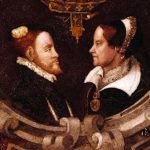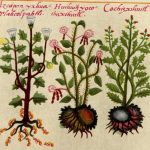A new exhibition at the Benson Latin American Collection explores the history of the Spanish galleons that sailed across the Pacific Ocean between New Spain (Mexico) and the Philippines almost every year for two and a half centuries. These ships were the ‘umbilical cord’ that sustained the Spanish colonization of the islands and the westward expansion of the Spanish Empire beyond the Americas.
The long voyage from Manila to Acapulco usually lasted five or six months. Galleons that survived slack winds and tropical storms arrived in Acapulco overflowing with Asian merchandise: spices including pepper, cloves and cinnamon; artwork made of porcelain, ivory, mother-of-pearl and jade; richly crafted wooden furniture; tapestries, screens, and numerous bundles of silk to quench the insatiable demand for taffeta and satin, brocades and damasks, to be sold in the Americas and in Spain. The galleons also brought Asian slaves to Mexico, whose experiences and contributions to Spanish American culture are still being uncovered by historians.
Alexander Von Humboldt remarked that Galleon ships sailing from Mexico to the Philippines went loaded with friars and silver. In addition to supplying the the islands with priests and precious metals mined in the Americas, the ships carried cochineal from Oaxaca, cocoa from South America, as well as wine, oil and textiles made in Spain. Moreover, hundreds of Mexican soldiers, many of them convicts, were sent to the Philippines to to fight against the colony’s internal and external enemies.
For the first time the Benson’s exhibition shows the Library’s important holdings of rare books, manuscripts, and maps that shed light on the historical connections between Asian and Latin America. A beautiful map of the islands created by the Jesuit Priest Pedro Murillo Velarde and the Tagalog engraver Nicholas de la Cruz Bagay in the early eighteenth century is one of the true highlights of the exhibition. Chinese sampans and Spanish galleon ships appear in the map, alluding to the archipelago’s commercial connections to Asia and Latin America. Other symbols in the map mark the Philippines as a Catholic space, alluding to the religious ties that bound the colony to the global Hispanic monarchy. Saint Francis Xavier is depicted riding a chariot between the islands of Borneo and Mindanao, waving the Jesuit flag high above his head. The crab grasping a cross standing beside the saint references an episode from the apocryphal history of Philippines Christianity. Legend told that the missionary was once caught at sea in a severe storm in this part of South East Asia. To calm the strong winds and high waves, Francis took the small crucifix he wore on a string around his neck and plunged it into the sea, causing the storm to immediately cease. Another miracle occurred the next day when a crab emerged from the ocean clenching the crucifix in its claws, returning the sacred object to its rightful owner.
Members of the public are warmly invited to attend the opening of the exhibition on Thursday, September 9, 2016 from 4.00pm to 7.00pm.
![]()
At 4.00pm Professor López Lázaro (University of Hawaii) will present a guest lecture on Early Modern Law and the Invention of the World: Was the Pacific the Modern World’s Point of Greatest Divergence?” A reception will follow.
![]()






